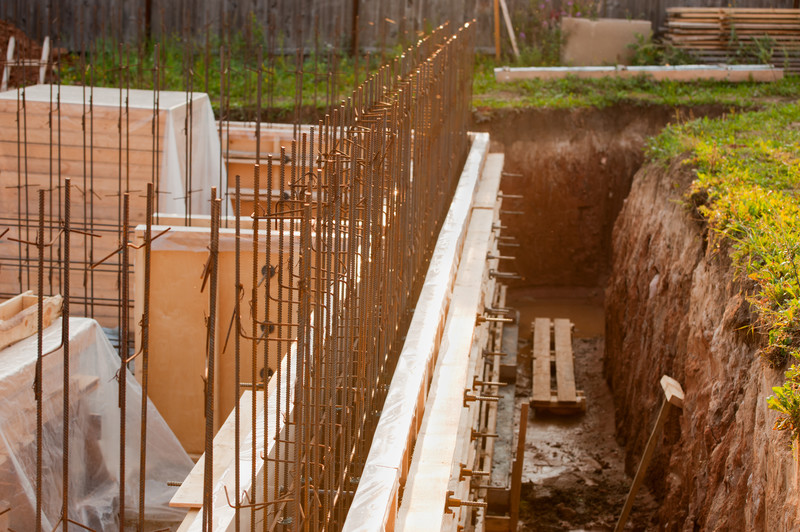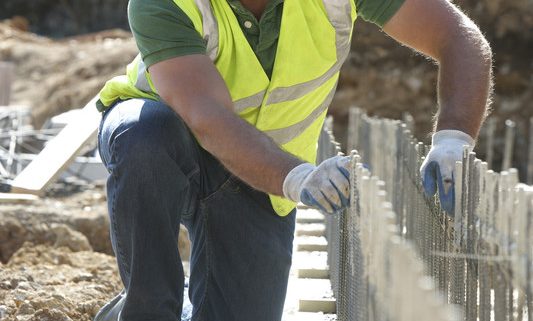The Importance of a Good Building Foundation – Part 2
 A while back (in 2012) we wrote a short blog article about the importance of a good building foundation. In the article, we made a case for foundations as the most important part of the building. Here’s why: the structure rests on the foundation and relies on the foundation to carry the load.
A while back (in 2012) we wrote a short blog article about the importance of a good building foundation. In the article, we made a case for foundations as the most important part of the building. Here’s why: the structure rests on the foundation and relies on the foundation to carry the load.
Recently, a Pastor from southern Illinois contacted us about the blog article. He asked if he could refer to the article in his upcoming devotional teaching on the scriptures at Matthew 7:24-29 on the wisdom of building on a firm foundation. You can imagine our reaction… we were touched.
And we were reminded that there’s a lot to know about foundations – that we had not even scratched the surface in our short blog article.
So here goes Part 2 – Importance of a good building foundation:
Foundations carry the weight of the building to solid ground. A foundation is a critical element that also serves as the base for everything that follows. The proper foundation strength, size, shape, and quality is crucial to a successful building project.
It is not the beauty of a building you should look at; it’s the construction of the foundation that will stand the test of time.
-David Allan Coe
 Soil can be Good and Bad
Soil can be Good and Bad
A building foundation rests on soil and transfers the load of the building to the soil below. The soil acts as a resisting force. From this, we can infer that the soil is a really big deal.
Soil is made of organic and inorganic matter. Organic soil contains material that is alive or was once alive. Inorganic soil is made of sand, silt, and clay. Some soils have the capacity to carry heavy loads and some do not.
To determine the nature of the existing soil, tests are ordered for proposed building sites. Holes are bored into the ground and samples are taken. Tests determine the nature of the existing soil.
Good Soil
Soil that has the capacity to support the building foundation is what you want. We look for soil that is inorganic, like clay or rock, and the contractor excavates down to undisturbed inorganic soil. This is ideally what the foundation rests on.
Bad Soil
Organic can be great on your plate but not under your building!
Organic matter is undesirable because it breaks down naturally through decomposition. Loose fill is also undesirable because it will not be compact enough. What happens when the soil is organic or loose and cannot carry the load of the planned building? In that case, the unsuitable soil is usually removed and replaced with something suitable.
Sometimes soil removal is impractical. We’ve had projects where there was a huge amount of soil to be removed and the cost was prohibitive. Some sites are just too remote or sensitive to access with heavy earth moving equipment. Several times, we’ve encountered a vein of organic matter within inorganic soil. In cases like this, we design foundations that bear on desirable soil far below the “bad soil”.
Really bad soil
Contaminated soil is a special case. When the soil is contaminated and a new building is proposed for the site, the contaminated soil presents a health risk. The excavation contractor will carefully remove and replace the soil with something suitable. We run into situations like this in areas that were formerly used for industrial purposes.
It’s not an insurmountable problem, but bad soils certainly add cost to projects.
Building Foundations Come in Many Forms
There’s a foundation for every project and location.
They can take on many forms, can be shallow or deep, and can be made of many materials. Even really difficult building sites and areas with poor soil conditions can be overcome with the right foundation.
We take into consideration the site soils, location, and the intended structure when determining the best foundation type. Construction of the foundation proceeds with care and tests are performed along the way to ensure bearing capacity is achieved.
When building a foundation, we sometimes run into special conditions. For instance, the adjacent soil is sometimes loose or the trench is large. In this case, it may be supported with the use of shoring during the construction of the foundation. Additions to buildings may require underpinning to stabilize the existing structure. Both of these situations add cost to the project.
Common Building Foundations
Spread Footings
The bottom portion is wider than the wall or column portion
Spreads the load over a larger area
Can be stepped or slopedThe most common type of foundation system
The most common type of foundation system
Made of concrete and reinforcing steel
Formed with wood, steel, or even cardboard
Easy to build with standard equipment
Grade Beams
The beam is all the same width and sits under the wall
Directs the load directly downCommon in small residential projects and rural areas
Common in small residential projects and rural areasMade of concrete and sometimes with reinforcing steel
Made of concrete and sometimes with reinforcing steelFormed with wood, cardboard, or steel or no form at all
Formed with wood, cardboard, or steel or no form at allEasier to build than the other types
Easier to build than the other types
Pier Foundations
Used to support a raised beam structure
Wood posts or concrete piers are set into the ground
Sometimes called post and beam or pier and beam
Common in areas subject to flooding or on steep slopes
Very common before the development of slab technology
Foundation cost is low but that’s offset by the cost of elevated buildings
Driven Piles
Cylindrical structure that is driven or drilled deep into the ground
Acts like a column, carrying heavy loads, and is suitable for deep foundations
End bearing piles bypass unsuitable soil to bear on a stronger soil or rock substrate
Friction piles transfer the load to the soil along the length of the pile
Made of concrete, steel or wood
Cost is usually high, due to labor costs
Raft Foundations
Shallow slabs with thickened areas that cover a wide area
Usually concrete reinforced with steel
Suitable where ground conditions are poor and settlement is likely or where there are a large number of individual loads
Can be fast and inexpensive to build
When a building foundation is well built, everything that goes on top of it will be easier to install. All building trades depend on the building foundation being right. So, when it comes to building projects (and relationships), the foundation is the most important work and the basis of everything that comes after.
Additional Resources:
Concrete Reinforcing Steel Institute
American Institute of Steel Construction



